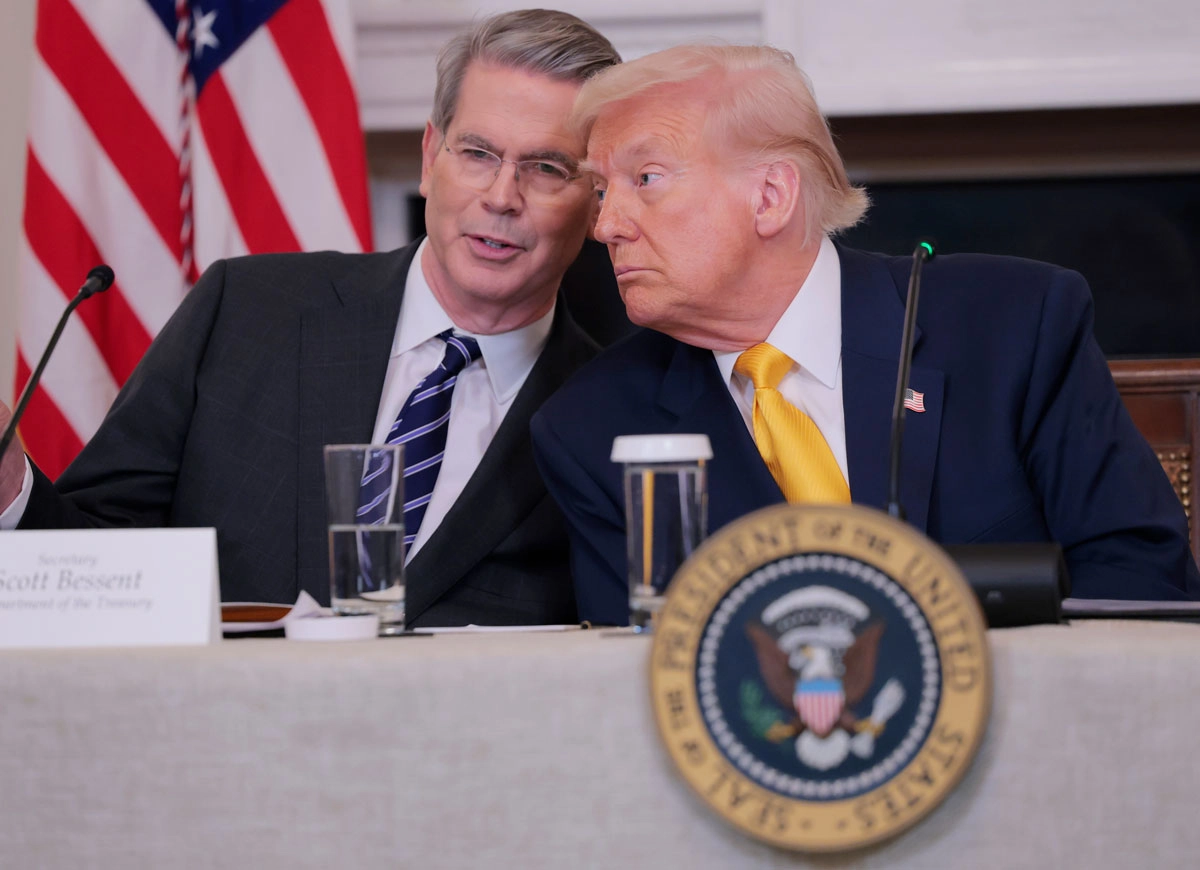

WASHINGTON, DC - MARCH 07: U.S. Secretary of Treasury Scott Bessent and U.S. President Donald Trump look on during The White House Digital Assets Summit in the State Dining Room of the White House on March 07, 2025 in Washington, DC. Trump held the summit to hear from crypto leaders on how his administration has invested in digital assets. (Photo by Anna Moneymaker/Getty Images)
Last month, a spokesperson for the US Treasury announced that pennies will permanently cease production after the current inventory of penny blanks runs out.
The final order of blanks was sent in, but the end of manufacturing will not immediately impact consumers. Pennies will remain an acceptable form of payment and should not affect cash purchases. However, because they will no longer be added to monetary circulation, businesses will be forced to round transactions to the nearest nickel instead.
The decision to end manufacturing is not a surprise, as many people have questioned the usefulness of the penny in recent years. The conversation began in the US after Canada stopped producing their one-cent coin in 2012. The high cost of producing the coin was the deciding factor.
“For far too long, the United States has minted pennies which literally cost us more than 2 cents. This is so wasteful!” President Donald Trump said in a Truth Social post in early February. “I have instructed my Secretary of the US Treasury to stop producing new pennies. Let’s rip the waste of our great nation’s budget, even if it’s a penny at a time.”
Subscribe to our free weekly newsletter!
A week of political news in your in-box.
We find the news you need to know, so you don't have to.
An individual penny costs more than three cents to manufacture, as of 2024. But the nickel costs even more. According to the government’s most recent fiscal year, a nickel costs just under 14 cents to produce and distribute. This has been acknowledged as an issue in the past, causing nickel production to drop by 86%, from 1.4 billion to just 202 million. It is possible nickel production will have to increase as pennies dwindle from circulation, which will likely impact the $56 million taxpayers are expected to save thanks to the halting of penny production.
Mark Weller, the executive director of the Americans for Common Cents, predicts that nickel production will have to increase to upwards of 2 million a year in order to meet demands, based on data collected from other countries that have ceased manufacturing of their lowest valued currency. Weller explained that the lowest-denomination coin is often the most commonly minted in most countries. An increase that large will cancel out any savings made from getting rid of the penny.
The Treasury is yet to comment on the future of nickel production.
Defense Secretary Pete Hegseth reposted a video on X that features Doug Wilson, the co-founder…
On Friday, President Donald Trump dismissed Billy Long as commissioner of the Internal Revenue Service…
Police bodycam footage revealed at the trial of Jared Wise, who currently serves as a…
On Monday, President Donald Trump ordered the deployment of the National Guard to the nation’s…
Two senior members of the Federal Bureau of Investigation (FBI) who blocked efforts to expose…
The U.S. stock of contraceptives, worth $9.7 million, which was originally planned to be distributed…